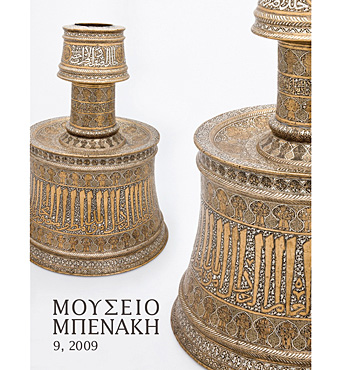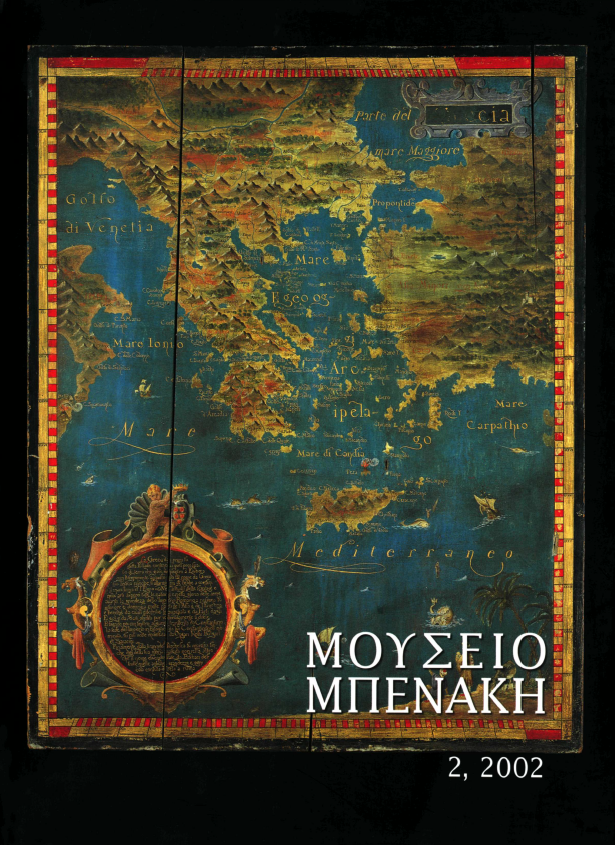Don't be indifferent to things which look different!
Abstract
The archive of the civil engineer Nikolaos Chatzipanayiotis (1901-68), donated by his daughter, E. Kypraiou, to the Benaki Museum's Modern Greek Architectural Archives is something which confirms the message of this charming little motto which I first heard some years ago at my daughters' school. Nikos Michael Chatzipanayiotis graduated from the National Technical University of Athens in 1921, the first graduation year for architects from the newlyfounded architecture school at the same institution. The total number of architects, mostly graduates of foreign schools, which up to then had been less than 80, was thus increased by 12. Chatzipanayiotis worked with many of these and also with a large number of younger architects in the course of his career as a civil engineer from 1924 to 1966. The archive, which contains 486 files, provides evidence of Chatzipanayiotis' abundant activity, which was only interrupted by his service in the army. His work can be divided chronologically into three periods: pre-war (1924-40), war and occupation (1940-45), and post-war (1945-66).
The first, pre-war period covers the years of the birth and dominance of the modernist movement. Reinforced concrete was the new material which gradually replaced traditional methods of construction. The large apertures, bold projections and building shells designed by the young architects required skilled engineers to handle them. One of these was Chatzipanayiotis, whose talents became his passport to the Technical Service of the Ministry of Education. Many of the structural studies for the school buildings of the period were his work, as were those for the Higher School of Economic and Commercial Studies, the reinforcement of the dome in Mystras, the extension of the National Technical University of Athens, and for many churches, hotels, bank branches, hospitals, factories, warehouses etc. The studies dating from his first period exceed 1000, some of which -among them the Dragoumis house (architect Alexandras Dragoumis) and the Ford factory (architect Georgios Kontoleon)- were particularly important and published in contemporary journals at home and abroad.
During the years of the war and the occupation, from 1940 to 1945, building activity ceased, and only eight studies relate to this period. From the spring of 1945 onwards his work recommenced and among his first assignments were the chemical fertiliser warehouses in Drapetsona and Kanellopoulos' Kerameikos AE factory in Neo Faliro. Houses, hotels, hospitals and factories followed. His association with the Ministry of Education continued, and his experience in the field led certain individuals to use him in the construction of private schools. Chatzipanayiotis' work continued uninterrupted almost up to his death. He produced more than 2000 studies over a period of 42 years, covering the whole of Greece. The Chatzipanayiotis archive is an important contribution to the technical history of the country, but what makes it truly invaluable to the study of modern Greek architecture is his collaboration with around 100 20th century architects, from Nikolaos Balanos (graduated 1883), Anastasis Metaxas (1885), Dimitris Chelmis (1896) and Ioannis Axelos (1897), right up to Kostis and Kaiti Gartsou (1958 and I960). His collaboration with architects of the inter-war years was particularly important. We thus have an overall picture of the architecture of the period starting at the beginning of the 20th century, when it still preserved the features of the final phase of classicism, followed by the transition to eclecticism and its triumphant conclusion in the modernist movement, which was abandoned in its turn in favour of the questionable architecture of the first post-war decade. The Chatzipanayiotis archive has much new data to offer to this field. Certain things we took for granted now appear otherwise. The contribution of architects to the construction programme seems to have been greater and more substantial then we believed, and 70% of the works in the archive display an architect's signature. The archive also gives us the opportunity to attribute many hitherto unidentified buildings to their architects. Many architects, some quite famous, are at present only represented by designs in the Chatzipanayiotis archive, while for others the archive is a major source of confirmatory evidence. It is perhaps well known that in Greece we suffer from poor handling of archival material. This is particularly the case in the field of architecture where the lack of documentation is serious. The foundation of the Archives at the Benaki Museum a few years ago, represents a determined effort to fill this gap, and in this area the Chatzipanayiotis archive has proved to be a real treasure-house
Article Details
- How to Cite
-
Καρδαμίτση-Αδάμη Μ. (2018). Don’t be indifferent to things which look different!. Mouseio Benaki Journal, 1, 149–158. https://doi.org/10.12681/benaki.18334
- Issue
- Vol. 1 (2001)
- Section
- Articles

This work is licensed under a Creative Commons Attribution-NonCommercial-ShareAlike 4.0 International License.
The copyright for articles published in Mouseio Benaki is retained by the author(s), with first publication rights granted to the journal. By virtue of their appearance in this open access journal, articles may be used freely for non-commercial uses, with the exception of the non-granted right to make derivative works, with proper reference to the author(s) and its first publication. The Benaki Museum retains the right to publish, reproduce, publicly display, distribute, and use articles published in Mouseio Benaki in any and all formats and media, either separately or as part of collective works, worldwide and for the full term of copyright. This includes, but is not limited to, the right to publish articles in an issue of Mouseio Benaki, copy and distribute individual reprints of the articles, authorize reproduction of articles in their entirety in another publication of the Benaki Museum, as well as authorize reproduction and distribution of articles or abstracts thereof by means of computerized retrieval systems.







